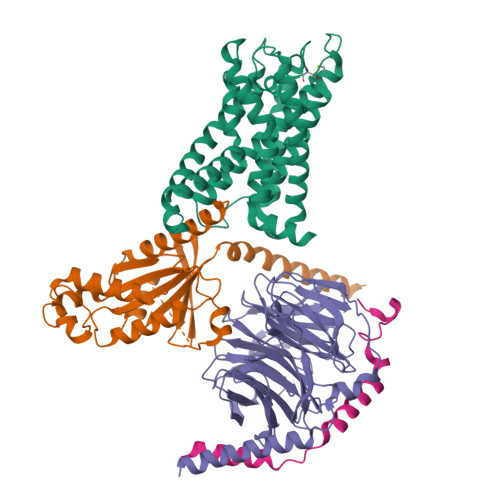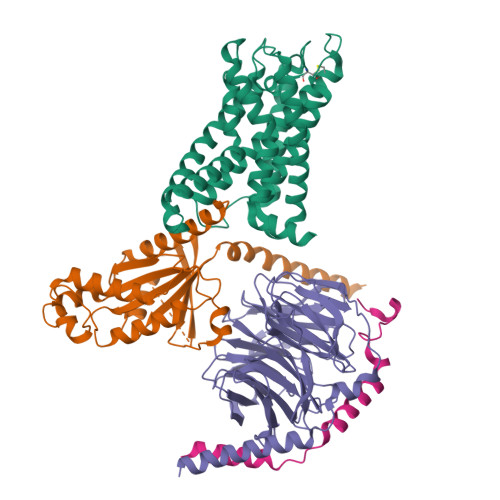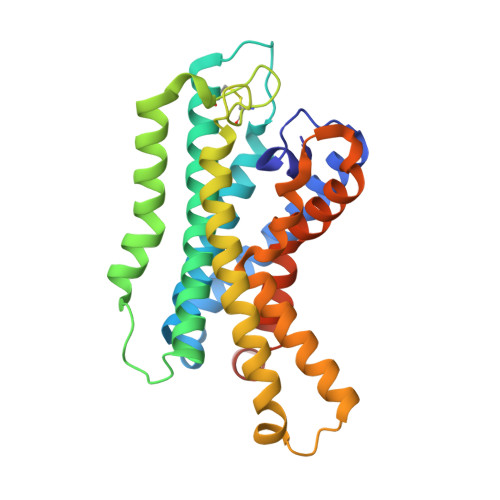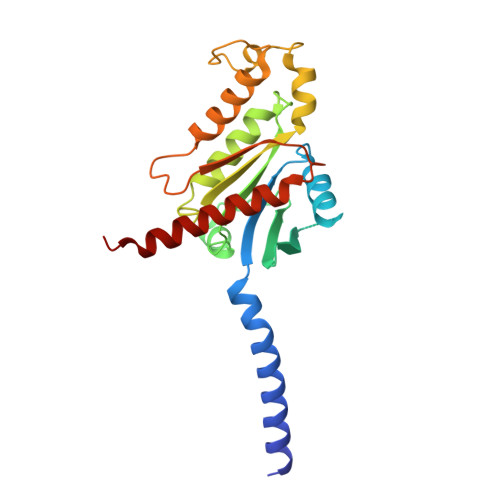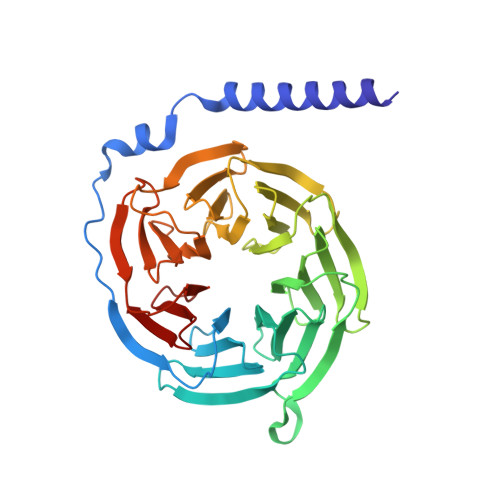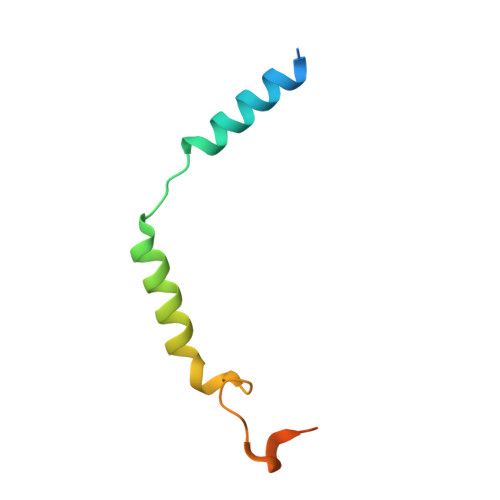Conformational transitions and activation of the adhesion receptor CD97.
Mao, C., Zhao, R.J., Dong, Y.J., Gao, M., Chen, L.N., Zhang, C., Xiao, P., Guo, J., Qin, J., Shen, D.D., Ji, S.Y., Zang, S.K., Zhang, H., Wang, W.W., Shen, Q., Sun, J.P., Zhang, Y.(2024) Mol Cell 84: 570-583.e7
- PubMed: 38215752
- DOI: https://doi.org/10.1016/j.molcel.2023.12.020
- Primary Citation of Related Structures:
8IKJ, 8IKL - PubMed Abstract:
Adhesion G protein-coupled receptors (aGPCRs) are evolutionarily ancient receptors involved in a variety of physiological and pathophysiological processes. Modulators of aGPCR, particularly antagonists, hold therapeutic promise for diseases like cancer and immune and neurological disorders. Hindered by the inactive state structural information, our understanding of antagonist development and aGPCR activation faces challenges. Here, we report the cryo-electron microscopy structures of human CD97, a prototypical aGPCR that plays crucial roles in immune system, in its inactive apo and G13-bound fully active states. Compared with other family GPCRs, CD97 adopts a compact inactive conformation with a constrained ligand pocket. Activation induces significant conformational changes for both extracellular and intracellular sides, creating larger cavities for Stachel sequence binding and G13 engagement. Integrated with functional and metadynamics analyses, our study provides significant mechanistic insights into the activation and signaling of aGPCRs, paving the way for future drug discovery efforts.
Organizational Affiliation:
Center for Structural Pharmacology and Therapeutics Development, Sir Run Run Shaw Hospital, Zhejiang University School of Medicine, Hangzhou 310016, China. Electronic address: maochunyou@zju.edu.cn.








